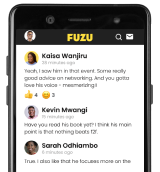Struggling to find your dream job? This data-driven guide offers a strategic approach to landing that perfect position. Learn how to identify in-demand skills, develop your expertise, and build a powerful network that will get you noticed by employers
Entering the job market or transitioning careers can be intimidating. However, a strategic approach can streamline your preparation and boost your success rate. This article offers practical steps to identify in-demand skills, prioritize your learning, and increase your visibility to potential employers. Included is also a prompt that can easily be used with for example OpenAI’s ChatGPT or Google’s Gemini to easily conduct the analysis. While the examples focus on data analysis, the underlying principles apply to many fields.
Step 1: Identify Target Skills
The first step is to pinpoint the skills employers seek in your target career. Say you're interested in data analysis. While opinions exist on specific programming languages, data can guide your decision. Analyze job boards Fuzu for positions related to your desired career and location. This will reveal the most sought-after skills in your area.
Step 2: Prioritize Skills Strategically
With your skills list in hand, prioritize them strategically. Consider factors like market trends, earning potential, and location. Analyze the correlation between specific skills and advertised benefits or salaries. This will help you identify skills associated with higher earning potential, aligning your learning with your career goals. Examine the growth trends of these skills over time to stay ahead of the curve and focus on those with increasing demand.
Step 3: Develop and Showcase Your Skills
Once you've prioritized your skills, it's time to develop them and showcase your expertise. Explore online courses, tutorials, and boot camps offered by platforms like Udemy, Coursera, edX, or Fuzu. Filter these resources by your skill level to ensure you find suitable materials for beginners, intermediate learners, or advanced professionals.
To demonstrate the real-world application of your skills, consider volunteering with non-profit organizations or participating in competitions. These experiences not only enhance your skills but also demonstrate social impact. Additionally, leverage hobby projects, industrial attachments, or internships to gain practical experience.
Step 4: Craft Compelling Application Materials
Having acquired the desired skills and gained practical experience, tailor your CV, Fuzu profile, and LinkedIn profile to highlight your expertise. Incorporate the keywords you discovered during your job posting analysis into your skills, experience, summary, and header sections. This will make your profile more relevant and attractive to potential employers.
Step 5: Build a Strategic Network
They say your network is your net worth. Leverage your findings to build a relevant professional network. Conduct a LinkedIn search based on the identified keywords and connect with or follow individuals active in those areas. Follow companies in your desired field and participate in skill-related events they organize. Building a strong network, regardless of location, can open doors to opportunities and valuable connections.
Beyond the Data: A Holistic Approach
While a data-driven approach is a valuable tool for career planning, consider your interests, career goals, and learning preferences as well. Integrate the insights gained from data analysis with your passions to make informed decisions about your learning journey. With the right skills, a tailored profile, and a strong network, you'll be well-equipped to pursue your dream job and achieve professional success.
Sample Analysis Process
Here's a sample analysis process you can adapt for your own use:
-
Gather Job Descriptions: Create a spreadsheet with job descriptions in one column. Collect as many relevant positions as possible.
-
Analyze Job Descriptions: Use a tool like ChatGPT or Gemini to analyze the keywords from the job postings. Here's a sample prompt you can use:
"Please analyze the keywords from the job posts that are shared below and provide insights on their frequency, benefit correlation, and market trends for a career in [Data Analytics].
-
Identify Frequently Occurring Keywords: First, identify the most frequently occurring keywords in these job posts related to [Data Analytics] and provide a ranked list based on their frequency of occurrence.
-
Analyze Benefit Correlations: Secondly, analyze the correlation between the specific skill keywords and the benefits of the job posts. Identify keywords that show a strong positive correlation with higher salaries in the [Data Analytics] market. Provide insights into the skills or keywords associated with higher earning potential in [Data Analytics].
-
Analyze Market Trends: Thirdly, analyze the growth trends of specific skills or keywords over time in [Europe]. Identify skills or keywords that have seen a significant increase in demand over the past [3 years]. Provide insights into emerging skills or keywords that are in high demand and can give professionals a competitive edge in [Data Analytics].
-
Present Results: Finally, present the results in an organized manner, including the frequency-ranked list of keywords, a summary of benefit correlations, and an analysis of market trends. Additionally, include any notable findings or recommendations based on the analysis.
Remember: This is a sample process, and you can adapt it to your specific needs.

